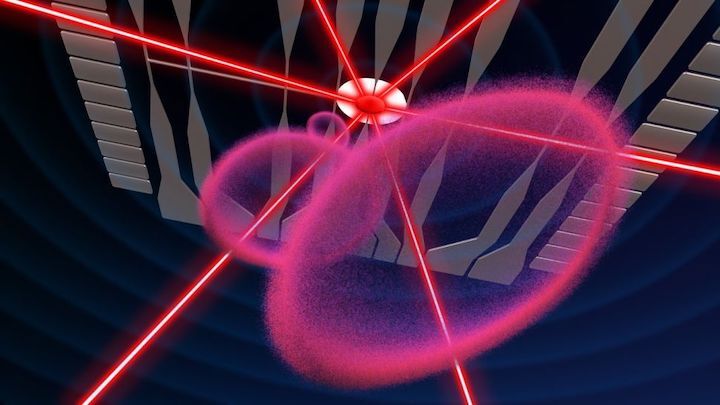1.06.2022
Yes, this is a real quantum physics experiment.

While it might be a comfortable 72 degrees Fahrenheit (22 degrees Celsius) inside the International Space Station (ISS), there's a small chamber onboard where things get much, much colder — colder than space itself.
In NASA's Cold Atom Lab aboard the ISS, scientists have successfully blown small, spherical gas bubbles cooled to just a millionth of a degree above absolute zero, the lowest temperature theoretically possible. (That's a few degrees colder than space!) The test was designed to study how ultracold gas behaves in microgravity, and the results may lead to experiments with Bose-Einstein condensates (BECs), the fifth state of matter.
The test demonstrated that, like liquid, gas coalesces into spheres in microgravity. On Earth, similar experiments have failed because gravity pulls the matter into asymmetrical droplets.
"These are not like your average soap bubbles," David Aveline, the study's lead author and a member of the Cold Atom Lab science team at NASA's Jet Propulsion Laboratory (JPL) in California, said in a statement(opens in new tab). "Nothing that we know of in nature gets as cold as the atomic gases produced in Cold Atom Lab.
"So we start with this very unique gas and study how it behaves when shaped into fundamentally different geometries," Aveline explained. "And, historically, when a material is manipulated in this way, very interesting physics can emerge, as well as new applications."
Now, the team plans to transition the ultracold gas bubbles into the BEC state, which can exist only in extremely cold temperatures, to perform more quantum physics research.
"Some theoretical work suggests that if we work with one of these bubbles that is in the BEC state, we might be able to form vortices — basically, little whirlpools — in the quantum material," Nathan Lundblad, a physics professor at Bates College in Maine and the principal investigator of the new study, said in the same statement. "That's one example of a physical configuration that could help us understand BEC properties better and gain more insight into the nature of quantum matter." Such experiments are possible only in the microgravity of the Cold Atom Lab, which comprises a vacuum chamber about the size of a minifridge. It was installed on the ISS in 2018, and it's operated remotely by a team on the ground at JPL.
"Our primary goal with Cold Atom Lab is fundamental research — we want to use the unique space environment of the space station to explore the quantum nature of matter," said Jason Williams, a project scientist for the Cold Atom Lab at JPL. "Studying ultracold atoms in new geometries is a perfect example of that."
The team's observations were published May 18 in the journal Nature(opens in new tab).
Quelle: SC
